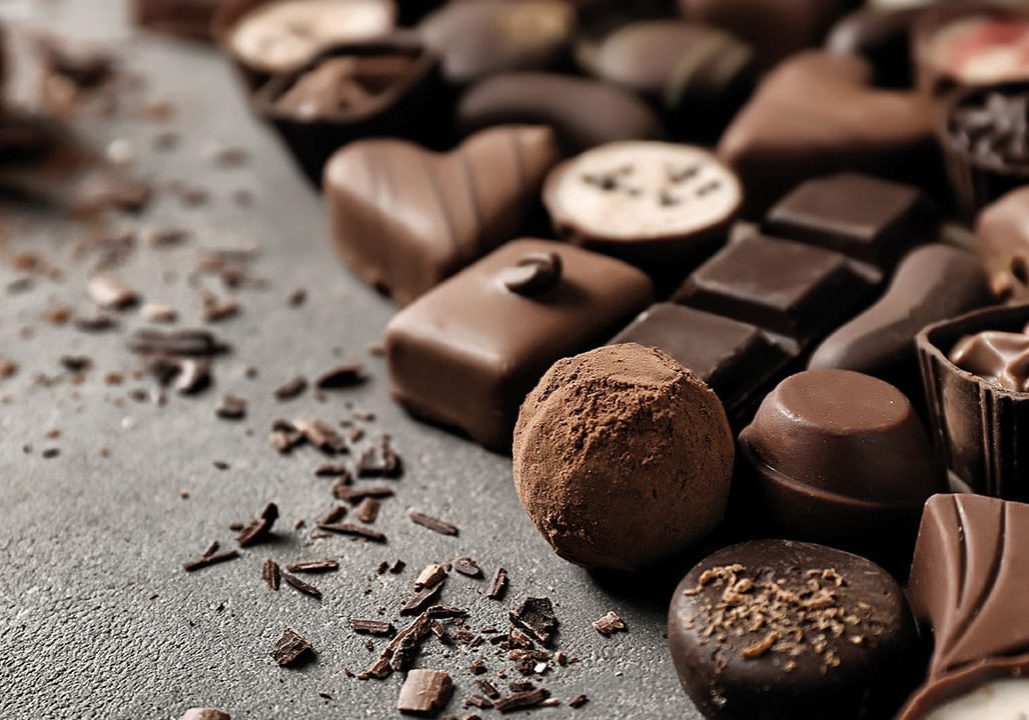
The future of chocolate
Scientists uncover why chocoalte 'feels' so good in the mouth, a breakthrough that could one day lead to healthier chocolate choices in the future
For those who have found themselves helpless to resist the power of the chocolate bar then read on.
There's a lot of science working against you in your battle to fight those cravings and temptations (damn, that chocolate tastes so good!) but it's now time to get to know how your enemy works.
For starters, ever wondered why chocolate tastes and just 'feels' so good? It's all down to lubrication, say scientists at the University of Lees.
Researchers have now decoded the physical process that takes place in the mouth when chocolate is eaten, as it changes from a solid to a smooth emulsion that many people find totally irresistible.
By analysing each of the steps, the interdisciplinary research team from the School of Food Science and Nutrition and the School of Mechanical Engineering at the University of Leeds hope it will lead to the development of a new generation of luxury chocolate that will have the same feel and texture but will be healthier to consume – the holy grail of chocolate lovers around the world!
During the moments it is in the mouth, the chocolate sensation arises from the way the chocolate is lubricated, either from ingredients in the chocolate itself or from saliva, or a combination of the two.
Fat plays a key function almost immediately when a piece of chocolate is in contact with the tongue. After that, solid cocoa particles are released and they become important in terms of the tactile sensation, so fat deeper inside the chocolate plays a rather limited role and could be reduced without having an impact on the feel or sensation of chocolate.
Health benefits
"Lubrication science gives mechanistic insights into how food actually feels in the mouth," said Anwesha Sarka, Professor of Colloids and Surfaces in the School of Food Science and Nutrition at Leeds. "You can use that knowledge to design food with better taste, texture or health benefits.
"If a chocolate has 5% fat or 50% fat it will still form droplets in the mouth and that gives you the chocolate sensation. However it is the location of the fat in the make-up of the chocolate which matters in each stage of lubrication, and that has rarely been researched.
"We are showing that the fat layer needs to be on the outer layer of the chocolate, this matters the most, followed by effective coating of the cocoa particles by fat, these help to make chocolate feel so good."
The study – published in the scientific journal ACS Applied Materials and Interfaces – did not investigate the question of how chocolate tastes. Instead, the investigation focused on its feel and texture.
Experts now believe that a next generation of chocolate can be developed at some point that offers the feel and sensation of high-fat chocolate, yet is a healthier choice. Now that's something everyone can get on board with!
The recent tests were conducted using an unnamed luxury brand of dark chocolate on an artificial 3D tongue-like surface that was designed at the University of Leeds. The researchers used analytical techniques from a field of engineering called tribology to conduct the study, which included in situ imaging.
Tribology is about how surfaces and fluids interact, the levels of friction between them and the role of lubrication – in this case, saliva or liquids from the chocolate. Those mechanisms are all happening in the mouth when chocolate is eaten.
When chocolate is in contact with the tongue, it releases a fatty film that coats the tongue and other surfaces in the mouth. It is this fatty film that makes the chocolate feel smooth throughout the entire time it is in the mouth.

Healthier choices
"With the understanding of the physical mechanisms that happen as people eat chocolate, we believe that a next generation of chocolate can be developed that offers the feel and sensation of high-fat chocolate yet is a healthier choice," said Dr Siavash Soltanahmadi, from the School of Food Science and Nutrition at Leeds and the lead researcher in the study.
"Our research opens the possibility that manufacturers can intelligently design dark chocolate to reduce the overall fat content. We believe dark chocolate can be produced in a gradient-layered architecture with fat covering the surface of chocolates and particles to offer the sought after self-indulging experience without adding too much fat inside the body of the chocolate."
It sounds like good news for a nation of chocolate lovers. Revenue from chocolate sales in the UK is forecast to grow over the next five years, according to research from the business intelligence agency Mintel. Sales are expected to grow 13% through to 2027 to reach £6.6 billion.
The researchers believe the physical techniques used in the study could also be applied to the investigation of other foodstuffs that undergo a phase change, where a substance is transformed from a solid to a liquid, such as ice-cream, margarine or cheese.
The study - Insights into the multiscale lubrication mechanism of edible phase change materials – was authored by Siavash Soltanahmadi, Michael Bryant and Anwesha Sarkar, all from the University of Leeds.




